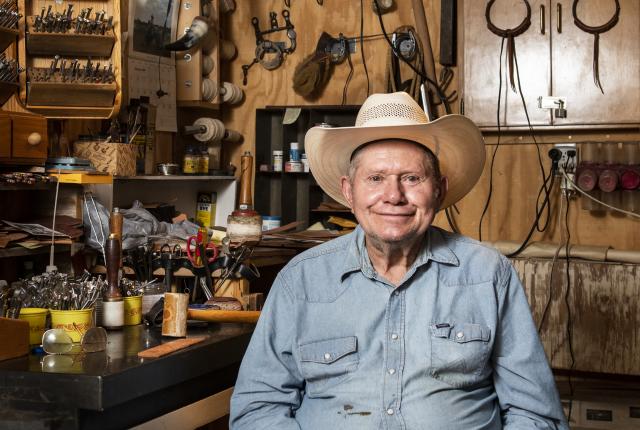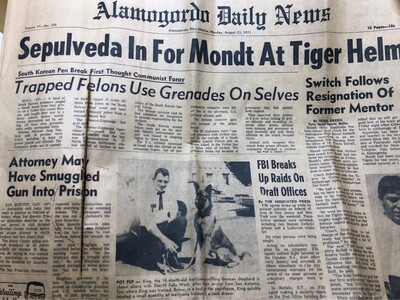The Art Saddle Making in the New Century…

Saddlemaker: James Morris
For more than 60 years, the Caballo saddlemaker has crafted artistic seats for cowboys, rodeo competitors, and everyday equestrians.
Courtesy of New Mexico Magazine
NOV. 03, 2021 BY KELLY KOEPKE SHARE
STORIES TUMBLE OUT QUICKLY when James Morris gets jawing about his 65 years of leatherwork and saddle making. “I started playing hooky from school and going to the saddle shop,” he recalls. “Working with my hands was more appealing than school.”
Raised on a ranch in Roswell, Morris built his first saddle as an 18-year-old apprentice to Harlan Webb, an El Paso saddlemaker considered among the all-time greats of the trade. Two of Morris’s own sought-after saddles are displayed as part of a new long-term New Mexico Farm and Ranch Heritage Museumexhibition celebrating the art of these cowboy essentials.
He’s got a tale about that, too. “They tricked me,” jokes Morris, who says he turned down the museum’s initial request for a donation. But the museum approached a woman whose husband had owned one of Morris’s vintage saddles. “I tried to buy it back from her,” he says. “She just up and donated it.”
At nearly 80, Morris is mostly retired from a craft that takes strength and patience. When he began making saddles and leather accessories—bridles, chaps, belts, and holsters—he had a young man’s hands for stitching and the stamina to stand for long hours. Morris Saddlery customers came from as far away as Australia to his workshop in Caballo, near Truth or Consequences. He often tells of beginning a saddle in the morning and finishing in the wee hours of the night—but mostly because he’d procrastinated until the deadline loomed.
Time, patience, and knowing how to pick out pieces from a hide—he prefers those from the Hermann Oak Leather Co. of St. Louis—are vital for the saddler’s art. “Some places on a saddle can use a thinner grade of leather, maybe from the belly,” he says. “Where you need heavy and strong, like for stirrups, the leather comes from the back.”
"Some places on a saddle can use a thinner grade of leather, maybe from the belly. Where you need heavy and strong, like for stirrups, the leather comes from the back."
—JAMES MORRIS
His well-used favorite tools were a gift from a friend almost three decades ago. “I wanted to order a set of tools he made, and he laughed that I didn’t have enough money. But in a month or so, he handed me a pork and-beans can. ‘What am I going to do with that?’ I asked. He said this was to put my new tools in. He made me a set, no charge. I love those tools.”
Today he still creates hand-tooled belts and other items. He also passes on his irreplaceable knowledge of cutting, shaping, stitching, and embellishing a cow’s hide into a comfortable seat, whether the saddle’s purpose is driving cattle, rodeo roping, or pleasure riding.
“I’ve had lots of apprentices,” he says. “Some made it and some didn’t. This is a hard business. My kids got pretty good at saddle making, but I worked them too hard, so they found other paths.”
More News from Alamogordo
- Alamogordo Online Residents Rally in Support of U.S. Action in Venezuela Despite Local Protest Coverage Online sentiment was more supportive locally in this military town of Alamogordo
- Greatest High School Sports Rivalries in Southern New Mexico (1926–Present) Southern New Mexico high school sports rivalries have evolved significantly over the past century














